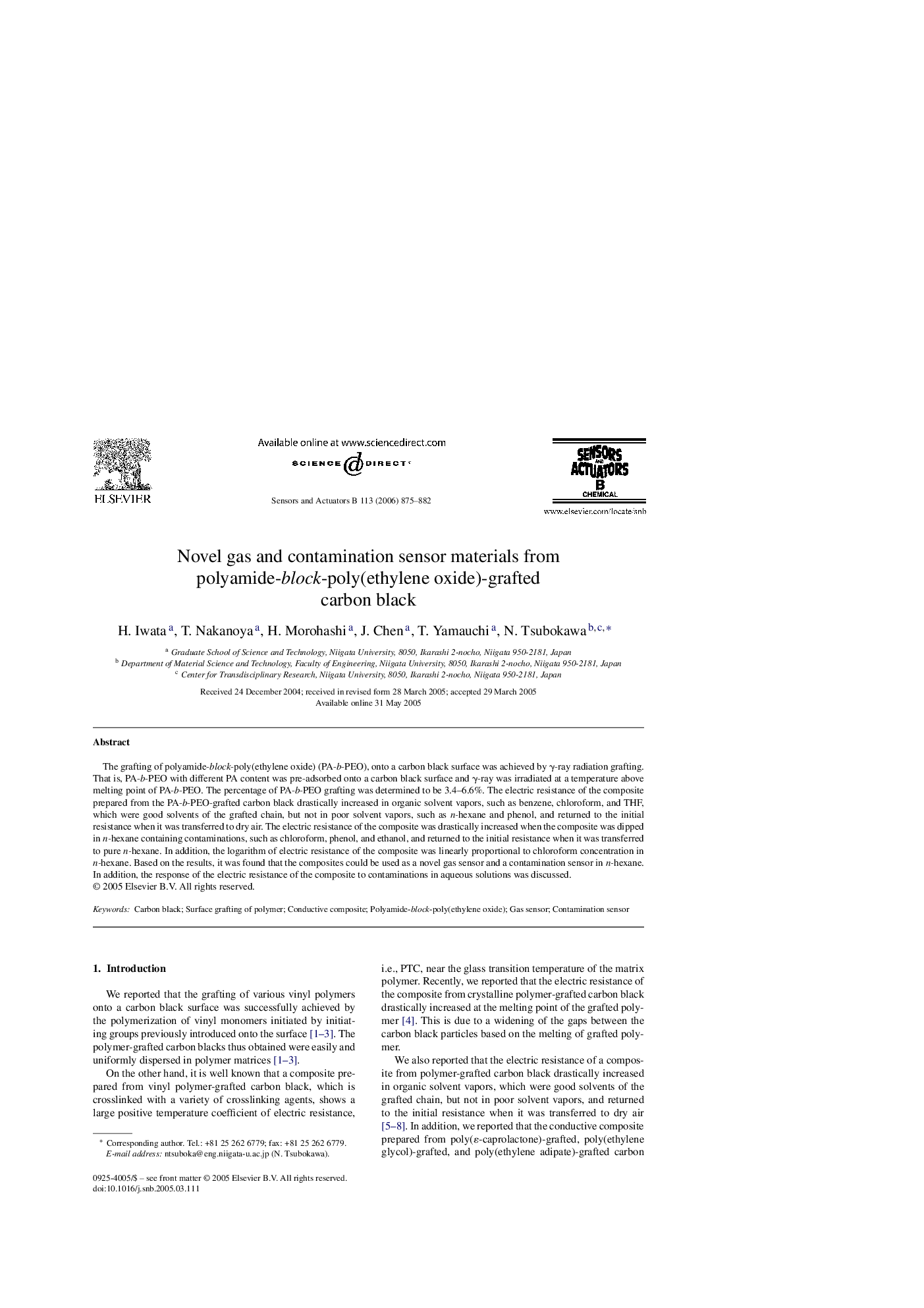| Article ID | Journal | Published Year | Pages | File Type |
|---|---|---|---|---|
| 746289 | Sensors and Actuators B: Chemical | 2006 | 8 Pages |
The grafting of polyamide-block-poly(ethylene oxide) (PA-b-PEO), onto a carbon black surface was achieved by γ-ray radiation grafting. That is, PA-b-PEO with different PA content was pre-adsorbed onto a carbon black surface and γ-ray was irradiated at a temperature above melting point of PA-b-PEO. The percentage of PA-b-PEO grafting was determined to be 3.4–6.6%. The electric resistance of the composite prepared from the PA-b-PEO-grafted carbon black drastically increased in organic solvent vapors, such as benzene, chloroform, and THF, which were good solvents of the grafted chain, but not in poor solvent vapors, such as n-hexane and phenol, and returned to the initial resistance when it was transferred to dry air. The electric resistance of the composite was drastically increased when the composite was dipped in n-hexane containing contaminations, such as chloroform, phenol, and ethanol, and returned to the initial resistance when it was transferred to pure n-hexane. In addition, the logarithm of electric resistance of the composite was linearly proportional to chloroform concentration in n-hexane. Based on the results, it was found that the composites could be used as a novel gas sensor and a contamination sensor in n-hexane. In addition, the response of the electric resistance of the composite to contaminations in aqueous solutions was discussed.
